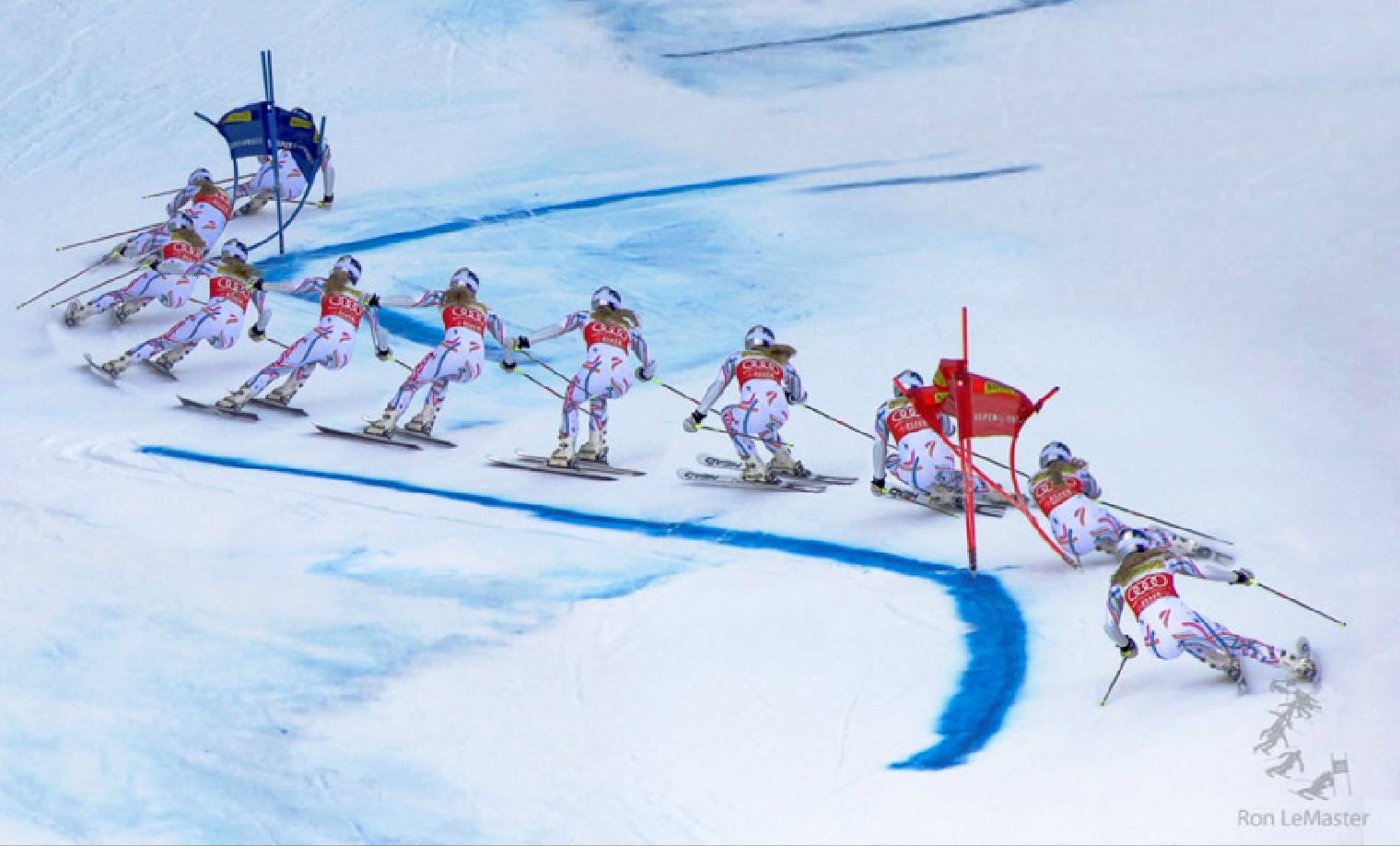@JESinstr
Whenever we see the skis having turned like 100 degrees from transition but the hips still face to the outside, remember that there is nothing to keep the hips from rotating with the skis other than the skier's effort. That is counteraction, plain and simple. Or whatever other names, but the point is that the skier strongly resisted the rotation of the hips, by effectively rotating them the other way (in the skis' plane of reference).
And this is most visible perhaps in GS, where the skier glides across the slope without unwinding for more than 6m and blocking pole plants are non-existent, really. Watch the direction of the hips below versus the direction of the skis, throughout the turn. Offset is what, 7m?
There is nothing to stop her hips from rotating strongly with the skis, other than her own effort to create the separation and keep the hips "stable". That's the counteraction of the hips, counteracting the rotation coming from the skis.
The reason most skiers out there rotate like there is no tomorrow, with zero separation, is because they do not oppose the rotation coming from the skis at all - the do not
counteract it. And again, this is perhaps most visible in longer carved turns, where inertia and blocking pole plants are removed from the equation.



